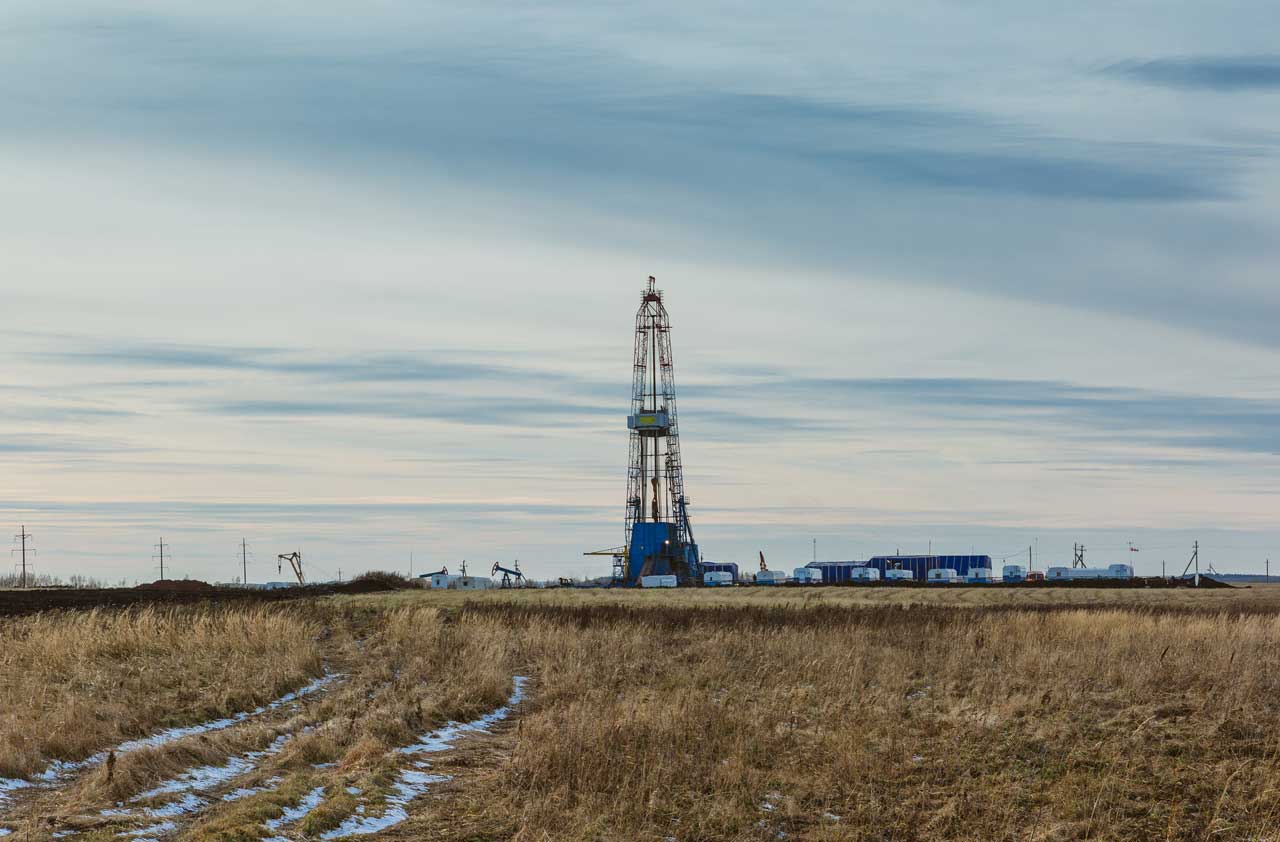Brighter Spots in Energy's Slow Recovery
With crude oil likely coming off its lows, some money is returning to the oil patch.


The following article is reprinted from our Kiplinger Alerts premium service. Try it free for 30 days.
You don’t have to be in the oil and gas business to know that the last two years have been brutal. The sell-off in oil markets that began in 2014 saw the price of crude fall from about $100 per barrel to a low of $26 last winter, before a modest rebound to $44 now. At the same time, natural gas prices fell to their lowest level since 1999 during the unusually warm winter of 2015-2016. As a result, dozens of companies have filed for bankruptcy, tens of thousands of workers have lost energy-related jobs, and manufacturers that make drilling equipment and related gear have seen their sales slump.
INTELLIGENCE FOR YOUR BUSINESS SUCCESS: For More Information About Kiplinger Alerts or to Try It Free for 30 Days, Click Here
But there are finally signs of better days ahead. No, the energy industry isn’t going to suddenly return to the boom times it enjoyed up until 2014. But the worst appears to be over.
From just $107.88 $24.99 for Kiplinger Personal Finance
Become a smarter, better informed investor. Subscribe from just $107.88 $24.99, plus get up to 4 Special Issues

Sign up for Kiplinger’s Free Newsletters
Profit and prosper with the best of expert advice on investing, taxes, retirement, personal finance and more - straight to your e-mail.
Profit and prosper with the best of expert advice - straight to your e-mail.
Prices: Bottoming Out
Barring a global economic recession that crimps energy consumption, crude oil and natural gas prices have probably hit their lows already. Benchmark West Texas Intermediate crude has clawed its way back to $44 per barrel, and we expect WTI to keep grinding higher through next year, averaging $50 to $55 per barrel. That’s still low relative to a few years ago, but beleaguered oil producers won’t knock it.
Meanwhile, natural gas futures prices have risen from less than $2 per million British thermal units (MMBtu) last winter to about $3 now. If expectations for colder weather this winter pan out, strong heating demand should push gas prices closer to $3.50 per MMBtu early in 2017. Again, that won’t spell a bonanza for producers. But it helps.
Still, even as energy prices trend higher, expect plenty of short-term volatility and some sharp price pullbacks along the way. Crude oil prices fell from $50 to $44 this week on signs that OPEC is struggling to hammer out a deal to curb its members’ oil output, which we warned about recently. Natural gas saw a similar dip because of unseasonably warm autumn weather in the East. No doubt such price turbulence will continue.
Green Shoots in the Oil Patch
Drilling activity is already perking up because of the modest recovery in energy prices. After hitting bottom in May, oil field services company Baker Hughes’ weekly tally of active rigs has increased by almost 40%. Granted, the number of rigs drilling new wells is still well below its level of a year ago, but the past few months have shown a palpable upturn. We look for the rig count to keep climbing in coming months, though it will probably do so in fits and starts, rather than increasing at a steady rate.
One Houston-based energy consultant who sometimes chats with us off the record says he is seeing early signs of investment capital returning to oil and gas after fleeing in recent years. “There’s a lot of dry powder out there,” he says. “Psychologically, there has been a shift.” Banks are starting to lend again and contractors are cautiously hiring as drilling starts to rebound. The industry even saw its first successful IPO in two years: Denver-based Extraction Oil and Gas (XOG), which went public last month. Surveying the state of the industry in general, our man in Houston says: “We’re not dancing yet, but we’re walking.”
Indeed, that optimism is borne out in the Department of Energy’s latest reports on U.S. oil production. Crude output peaked in April 2015 at 9.6 million barrels per day and then slipped to 8.5 million barrels per day now. But that slide seems to have leveled off. Whereas DOE’s weekly production reports had been showing a steady downward trend for many months, the latest figures indicate that output has stabilized. With more rigs drilling new wells, and more oil coming from those new wells than from predecessors drilled earlier (thanks to improved drilling techniques), nationwide output could soon start creeping higher again.
However, production won’t come back everywhere. Only the fields with the best resources and the most favorable production costs will lure investment capital.
The hottest play right now: The Permian Basin in West Texas, which has seen a big increase in drilling since oil prices started to recover. It’s a sprawling oil-producing region with huge reserves to tap. But just as importantly, the Permian is home to ample pipeline capacity and other infrastructure that allows operators to get newfound oil to market. Boasting some of the lowest production costs of any shale oil field in the United States, the Permian figures to hold up when oil prices are down and to positively thrive when prices are rising.
Another region to watch: Colorado’s Wattenberg Field. Our Houston energy consultant (who prefers to remain anonymous) calls it “the biggest oil field you’ve never heard of.” Colorado is a drilling-friendly state, and the Wattenberg is a promising play that is getting a lot of energy firms’ attention. Extraction Oil and Gas is a major player there.
Conversely, some prominent oil and gas fields will continue to struggle. North Dakota’s massive Bakken Shale, for instance, lacks adequate pipeline capacity and is forced to rely on pricier freight rail to bring some of its barrels to refineries. Lynn Helms, the director of the North Dakota Industrial Commission’s Department of Mineral Resources, notes that operators in the Bakken don’t plan to significantly ramp up drilling until WTI rises to $60 per barrel, a price we don’t expect to see for a while yet. The gas-rich Marcellus Shale in Pennsylvania faces similar headwinds. Gas prices probably need to rise 20% to 30% more before drilling there becomes economically attractive again.
Cutting Costs
The companies that survive this downturn in energy prices will be the ones that found ways to slash their costs while pumping more oil or gas from each well. Plunging prices made such efficiency essential. That has meant operating rigs with fewer crew members, moving them to new well sites faster to minimize downtime, and renegotiating prices with suppliers and contractors. It’s been a painful learning process, but the good news is that many energy firms are far leaner now. And even as oil and gas prices gradually trend higher, those operators won’t discard the methods they’ve discovered for doing more with less.
The hunt for efficiency extends across the entire industry. Take sand, a crucial ingredient in hydraulic fracturing. Sand holds open the tiny fractures created when water is injected into wells at high pressure, allowing oil and gas to flow to the surface. The best sand for fracking comes from mines in Wisconsin and other Midwestern states that are far from the oil fields of Colorado or West Texas, making shipping expensive. That’s why oil field services giant Halliburton recently worked with sand miner U.S. Silica to ship a record-breaking 19,000 tons of frack sand from Illinois to a storage site in Texas by a dedicated freight train. “It’s really about efficiency,” says Tim Wesbey, Halliburton supply chain director for the Western Hemisphere. Moving larger volumes of sand at one time lowers the per-ton cost, which ultimately makes it a bit cheaper to get oil out of the ground.
Working smarter also means adopting new technologies and equipment. Some operators, for instance, are looking to reduce the impact of drilling on local communities, which often resent the noise, truck traffic and pollution that fracking can bring. Some are turning to electric drilling rigs in places where they can connect to high-voltage power lines. Electric rigs are quieter than those running on diesel and don’t emit diesel fumes: Attractive qualities when working near suburban communities in places like the Front Range of the Rocky Mountains in Colorado. Liberty Oilfield Services of Colorado is touting its new, quieter fracking equipment, which it claims is three times quieter than conventional machinery.
Exports: Going Strong
The slump in energy prices has focused a lot of attention on the drilling industry’s woes. But quietly, the U.S. has continued its ascent as a major energy supplier to the world. Exports of U.S.-refined fuels have surged in recent years because refiners can produce more than domestic consumption requires.
Exports of U.S.-made diesel fuel have thrived, thanks to strong demand and refining problems in certain Latin American markets. And companies such as Enterprise Products Partners, Phillips 66 and Sunoco have invested heavily in new export terminals to ship out some of America’s glut of propane, says Andrew Reed, principal at energy research firm ESAI Energy LLC. He expects propane exports to keep growing, albeit at a “more modest pace” in coming years because of strong competition from Middle Eastern propane producers. His research indicates that the era of “easy growth” for U.S. propane exports is ending.
INTELLIGENCE FOR YOUR BUSINESS SUCCESS: For More Information About Kiplinger Alerts or to Try It Free for 30 Days, Click Here
But he also expects to see sales of U.S. ethane to foreign buyers ramp up in the next few years because of new export terminals built by Sunoco and Enterprise. Ethane is an important feedstock for the chemical industry, and as with propane, the U.S. has ample supplies available to export.
Profit and prosper with the best of Kiplinger's advice on investing, taxes, retirement, personal finance and much more. Delivered daily. Enter your email in the box and click Sign Me Up.

Jim joined Kiplinger in December 2010, covering energy and commodities markets, autos, environment and sports business for The Kiplinger Letter. He is now the managing editor of The Kiplinger Letter and The Kiplinger Tax Letter. He also frequently appears on radio and podcasts to discuss the outlook for gasoline prices and new car technologies. Prior to joining Kiplinger, he covered federal grant funding and congressional appropriations for Thompson Publishing Group, writing for a range of print and online publications. He holds a BA in history from the University of Rochester.
-
 Nasdaq Takes a Hit as the Tech Trade Falters: Stock Market Today
Nasdaq Takes a Hit as the Tech Trade Falters: Stock Market TodayThe Dow Jones Industrial Average outperformed on strength in cyclical stocks.
-
 $100 Fee Turning Away Visitors from National Parks
$100 Fee Turning Away Visitors from National ParksDiscover how the new $100 fee will impact your experience visiting 11 of America's most popular parks.
-
 Is Mechanical Breakdown Insurance Better Than an Extended Car Warranty?
Is Mechanical Breakdown Insurance Better Than an Extended Car Warranty?More insurers are starting to offer mechanical breakdown insurance to new car owners. What is it and should you buy it?
-
 The Kiplinger Letter's 10 Forecasts for 2026
The Kiplinger Letter's 10 Forecasts for 2026The Kiplinger Letter Here are some of the biggest events and trends in economics, politics and tech that will shape the new year.
-
 Disney’s Risky Acceptance of AI Videos
Disney’s Risky Acceptance of AI VideosThe Kiplinger Letter Disney will let fans run wild with AI-generated videos of its top characters. The move highlights the uneasy partnership between AI companies and Hollywood.
-
 AI Appliances Aren’t Exciting Buyers…Yet
AI Appliances Aren’t Exciting Buyers…YetThe Kiplinger Letter Artificial intelligence is being embedded into all sorts of appliances. Now sellers need to get customers to care about AI-powered laundry.
-
 What to Expect from the Global Economy in 2026
What to Expect from the Global Economy in 2026The Kiplinger Letter Economic growth across the globe will be highly uneven, with some major economies accelerating while others hit the brakes.
-
 The AI Boom Will Lift IT Spending Next Year
The AI Boom Will Lift IT Spending Next YearThe Kiplinger Letter 2026 will be one of strongest years for the IT industry since the PC boom and early days of the Web in the mid-1990s.
-
 Amid Mounting Uncertainty: Five Forecasts About AI
Amid Mounting Uncertainty: Five Forecasts About AIThe Kiplinger Letter With the risk of overspending on AI data centers hotly debated, here are some forecasts about AI that we can make with some confidence.
-
 Worried About an AI Bubble? Here’s What You Need to Know
Worried About an AI Bubble? Here’s What You Need to KnowThe Kiplinger Letter Though AI is a transformative technology, it’s worth paying attention to the rising economic and financial risks. Here’s some guidance to navigate AI’s future.
-
 Will AI Videos Disrupt Social Media?
Will AI Videos Disrupt Social Media?The Kiplinger Letter With the introduction of OpenAI’s new AI social media app, Sora, the internet is about to be flooded with startling AI-generated videos.